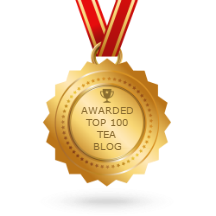When Robert Bruce first brought tea plants smuggled out of China to India, he discovered that the inhabitants of the Assam area were already enjoying tea made from a tea bush varietal growing wild (Camellia Sinensis assamica). He set about cultivating the plant and in a few years tea was being exported to London. Today, the area boasts a production level of over 360 million kg of tea per year. Several estates contribute the lion’s share to that total.
The elephant in the room is Williamson, inarguable the big gun when it comes to Assam teas. When you see their Breakfast Blend, you can rest assured that it came from one of their estates. However, you can also get some of their estate teas unblended, such as Tarajulie estate tea. Williamson has about 29 tea estates in all.
The 3 Top Producing Williamson Tea Estates:
1. Monabarie — Over 1100 hectares growing tea, producing almost 2.8 million kg of CTC Assam. They have a reputation for a pleasant working environment for their employees and verdant scenery.
2. Pertabghur — Producing over 2 million kg of CTC Assam tea a year on over 938 hectares. This large, luxurious tea garden is the capital of the Williamson Magor Tea Empire.
3. Bogapani — About 840 hectares growing over 2 million kg of CTC and Orthodox Assam. The garden was established in 1917 by W.R. Noble.
There are lots of other tea estates in the Assam area. Some of the top producers:
- Hattigor — Started in 1893, this tea estate now has almost 1000 hectares planted with tea, over 1900 workers, and produces both the CTC and Orthodox types of Assam teas. They boast yields of about 2000 kg of tea per hectare per year, or around 2 million kg per year. Their tea is usually combined with teas from 26 other tea estates owned by their parent company, Tata Tea.
- Tengpani — The estate has about 522 hectares planted in tea and yield about 1,000,000 kg per year. They have their own factory and produce both CTC and Orthodox Assams.
- Mornai — A tea estate owned by a church — the Northern Evangelical Lutheran Church.
One thing that doesn’t come up a lot when discussing tea estates in China, India, and elsewhere is the wildlife they have to deal with. Here in the U.S., I hear stories of elk, deer, wolves, foxes, bears, and other “critters” interacting with farmers and ranchers. The same is true of other countries. In India, they deal with elephants, tigers, pythons, and a lot more. If the species happens to be one that is protected, such as elephants, the tea estate can have another issue on its hands: getting the animal off the estate without injuring it. The Dilli estate had an even bigger dilemma when a dead elephant was discovered there.
Workers deal with a lot of the same issues there that we do here, such as labor laws, working conditions, and health. For example, an outbreak of meningitis took the lives of several workers at the Govindabari estate last Winter.
Just a few things to mull over while sipping that cuppa malty, caramelly, jammy goodness in your teacup. Enjoy!



Leave a reply to Is It a Tea Garden, Plantation, or Estate? | Tea Blog Cancel reply